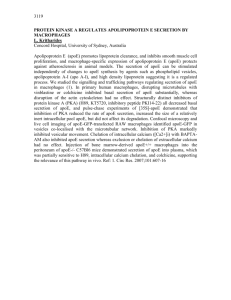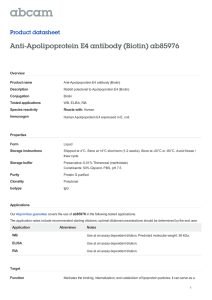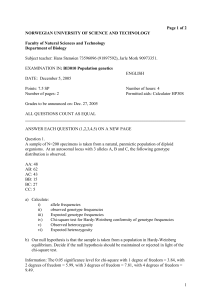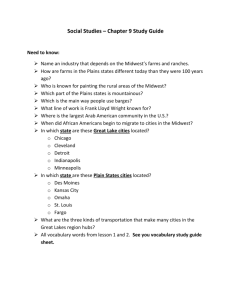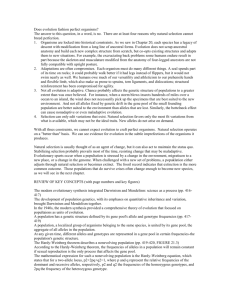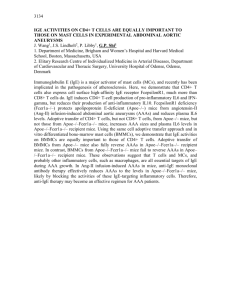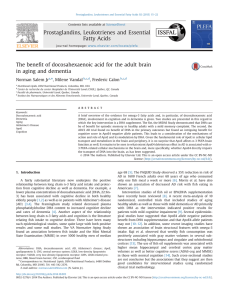Correlation of Frequencies of Apolipoprotein E Mutations with Minhtam Dang
advertisement
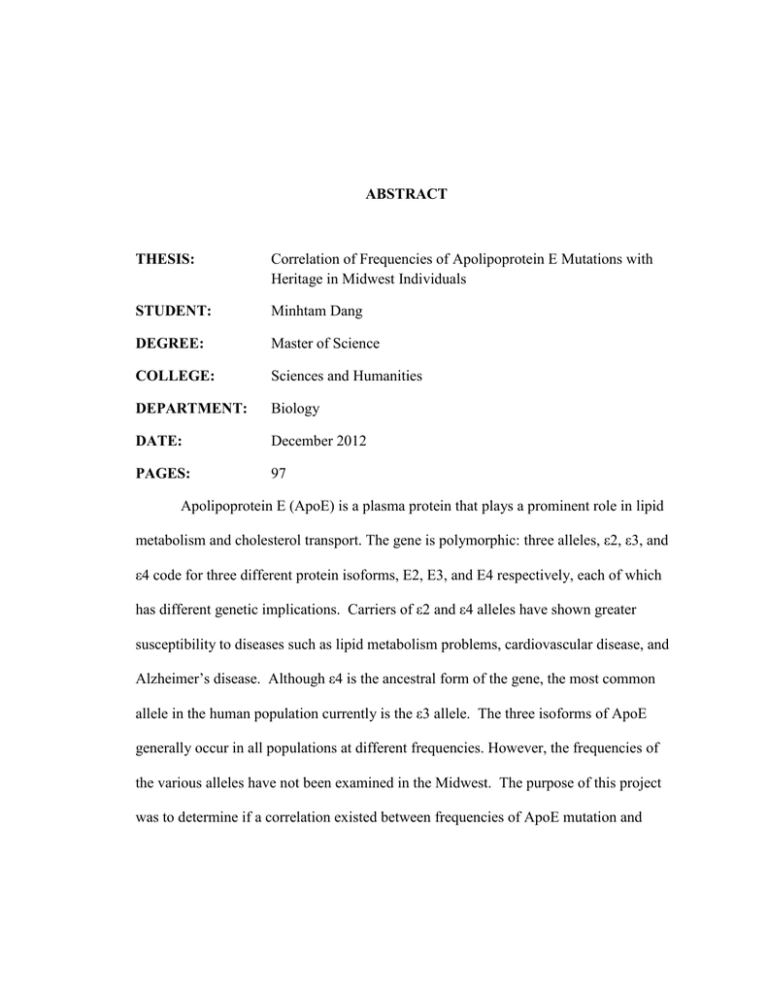
ABSTRACT THESIS: Correlation of Frequencies of Apolipoprotein E Mutations with Heritage in Midwest Individuals STUDENT: Minhtam Dang DEGREE: Master of Science COLLEGE: Sciences and Humanities DEPARTMENT: Biology DATE: December 2012 PAGES: 97 Apolipoprotein E (ApoE) is a plasma protein that plays a prominent role in lipid metabolism and cholesterol transport. The gene is polymorphic: three alleles, ε2, ε3, and ε4 code for three different protein isoforms, E2, E3, and E4 respectively, each of which has different genetic implications. Carriers of ε2 and ε4 alleles have shown greater susceptibility to diseases such as lipid metabolism problems, cardiovascular disease, and Alzheimer’s disease. Although ε4 is the ancestral form of the gene, the most common allele in the human population currently is the ε3 allele. The three isoforms of ApoE generally occur in all populations at different frequencies. However, the frequencies of the various alleles have not been examined in the Midwest. The purpose of this project was to determine if a correlation existed between frequencies of ApoE mutation and heritage in Midwest individuals by using real-time PCR. It was hypothesized that this method could be an alternative and cost effective method to sequence an individual’s genome for personalized healthcare purposes. In 2000, Dr. Vann and her research assistants collected saliva samples from approximately 300 anonymous volunteers participating in the UniverCity fair hosted by Ball State University. The samples were catalogued in an Excel database with their corresponding information (gender, self- reported lineage). From this database, 50 samples were randomly selected for this study and the DNA was screened by real-time PCR for isoforms of ApoE. A handful of individuals with altered alleles were identified. The specific number of each isoform and the genotype of each individual were determined. Only one of the 50 individuals resulted in a non-wild type haplotype. A confirmatory melt curve analysis of this major heritage group A individual resulted in a homozygous E4 genotype. Unfortunately, a correlation between frequencies of ApoE mutation and heritage in Midwest individuals could not be inferred based on one differing individual. Thus, we did not have sufficient non-wild type haplotypes to permit us to amplify the variable regions of maternally inherited mitochondrial DNA for sequencing. Those sequences could have been aligned with the Cambridge Reference Sequence (Mitomap 2006) to determine maternal lineage or haplotype, which could then be correlated with self-reported lineage, and the presence of specific isoforms of ApoE.
